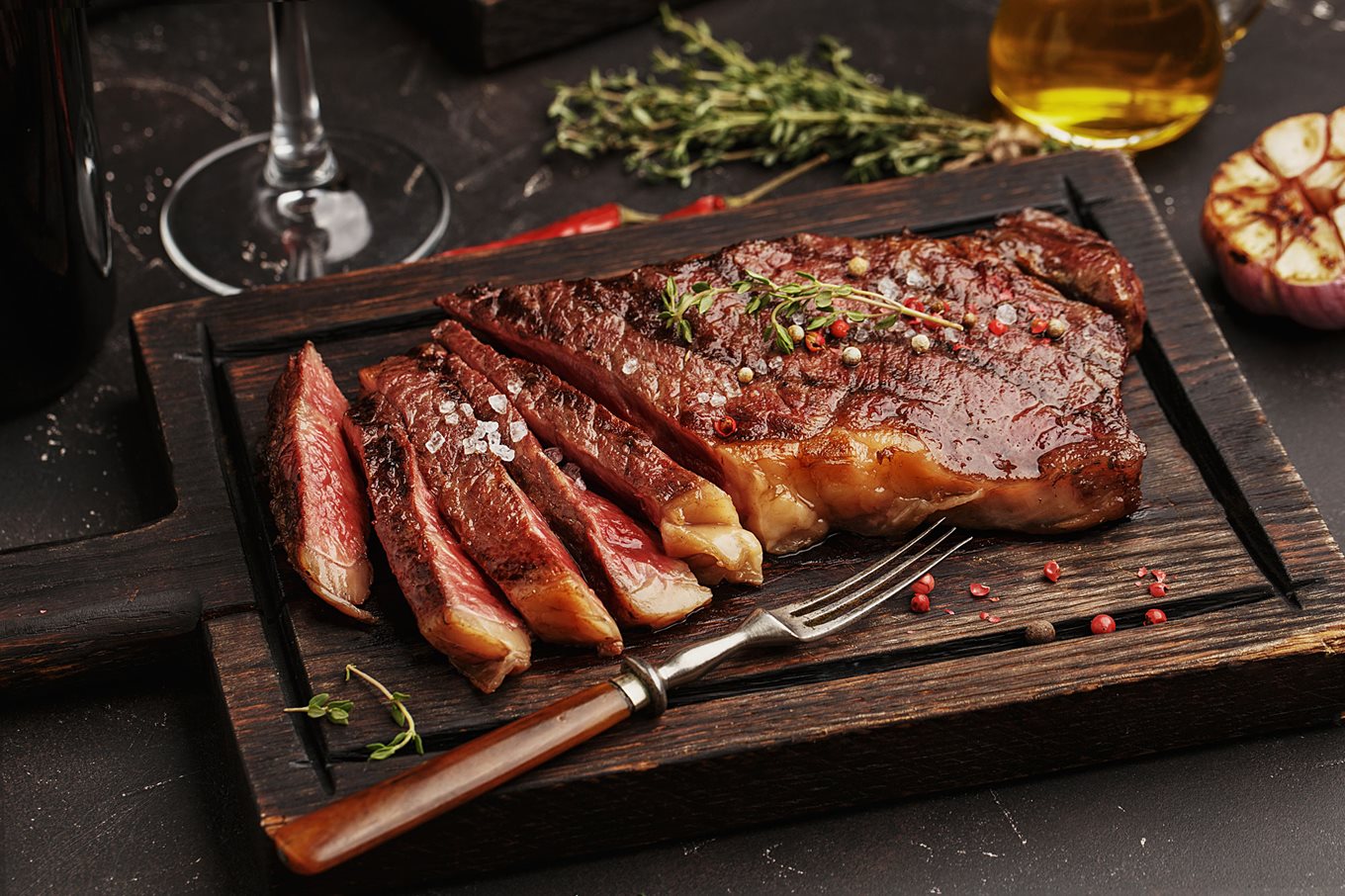How to cook meat safely

Cooking meat properly is important to kill the bacteria that can cause food poisoning.
All raw meats can carry harmful bacteria
- Whole cuts of meat, like a beef steak or joint, carry bacteria just on the outside of the meat.
- Other meats, such as pork and poultry, can have bacteria all the way through the meat.
- When a whole cut of meat is minced or skewered, this moves any bacteria all the way through the meat.
How to cook whole cuts of meat
- Use a high temperature to seal the meat and kill any bacteria that might be on the outside.
- You’ll know the meat has been properly sealed when all of the outside has changed colour.
- Vulnerable people, including elderly people, babies and toddlers, pregnant women and people who are unwell, should avoid eating lamb or beef that is “rare” or pink.
Which meats can be eaten rare?
You can eat meats that have bacteria only on the outside “rare” or pink. These are:
- Beef steaks
- Whole joints of beef
- Lamb chops
- Whole joints of lamb
Which meats should be cooked all the way through?
It’s essential to cook any meat or fish that has been minced or skewered all the way through. These include:
- Rolled joints
- Burgers
- Sausages
- Chicken nuggets
- Kebabs
- Kidneys, liver and other types of offal
Poultry (including turkey, chicken, duck and goose) and pork also need to be cooked all the way through as these can have bacteria all the way through the meat.
Breaded frozen chicken
When it comes to breaded frozen chicken products, it's important to check and follow the cooking instructions on the pack, and if the product should be defrosted before cooking.
- Always check breaded chicken products are cooked thoroughly by inserting a meat thermometer into the centre of the product. It is safe to eat when the thermometer reads 75⁰C.
- Wash your hands thoroughly with soap and water after touching raw chicken products and before you handle ready-to-eat food
- Avoid cross-contamination by cleaning surfaces, plates or utensils that has been in contact with raw meat
How should I cook these meats?
- How hot the oven should be will depend on the cut of the meat.
- How long you should cook it for will also depend on the cut, and how you want to cook it.
- The temperature should be hot enough to cook the meat but not so hot that the outside will burn before the inside has had a chance to cook.
- If you are cooking small pieces of meat such as sausages, move them around and turn them regularly so that each piece cooks evenly.
- Use separate utensils for raw or partially cooked meat and cooked meat.
- When roasting poultry, pork joints and rolled joints use the following times and temperatures as a guide.
| Meat (roasting) | Time and weight | Temperature |
|---|---|---|
| Whole Chicken | 20 mins per 450g / lb plus 20 extra mins | 180°C/350°F/Gas 4 or 5 |
| Pork Joint | 35 mins per 450g / lb plus 35 extra mins | 180°C/350°F/Gas 4 or 5 |
| Rolled Joint (any meat) | 35 mins per 450g / lb plus 35 extra mins | 180°C/350°F/Gas 4 or 5 |
How do I check these meats are properly cooked?
- When you pierce the thickest part of the meat with a fork or skewer, the juices should run clear. For a whole chicken or other bird, the thickest part is the leg between the drumstick and the breast.
- Cut the meat open with a clean knife to check it is piping hot all the way through – it should be steaming.
- Meat changes colour when it is cooked. Make sure there is no pink meat left.
- If you're cooking a very large dish, such as a casserole, check it in a few places, because some parts of the dish may be less hot than others.
- If you have a meat thermometer you can check the meat is safe to eat by inserting a clean thermometer probe into the thickest part of the meat or poultry and checking the temperature has reached 75ºC.
How to defrost meat safely
- Defrost meat in the fridge, not at room temperature.
- Allow 24 hours to defrost each 2.5kg/5lbs of meat or chicken.
- Put the meat on a plate and place it on the bottom shelf of the fridge.
- When meat thaws, a lot of liquid can come out. This liquid can spread bacteria to any food, plates or surfaces that it touches. Keep the meat covered so that it can’t touch or drip onto other foods.
- Cook the raw meat within 24 hours of defrosting it.
- Only defrost meat in the microwave if you are going to cook and eat it straight away.

